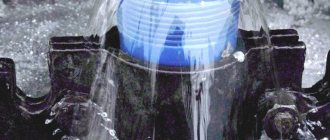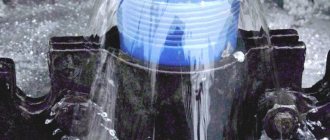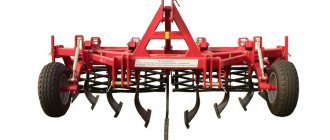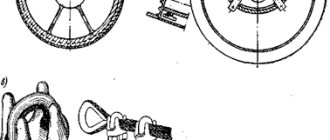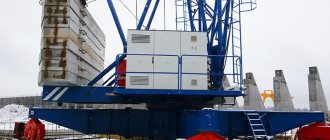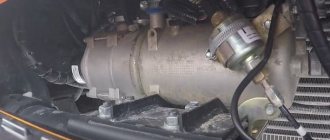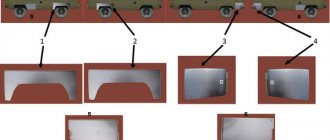Horizontal directional drilling (HDD method) is a way to lay various communications underground using a trenchless method. When using the method, the landscape surface remains untouched, including landscaping elements, road surfaces, buildings and other objects. At the moment, several proven methods of horizontal directional drilling have been developed, which are actively used to reduce the cost of laying communications and preserving objects on the surface of the earth.
Features of the horizontal directional drilling method
When using the HDD method, the cost of similar work is reduced by 2-3 times.
If it is not possible to carry out communications in the landscape in the traditional way with digging trenches, a puncture in the ground is used. The horizontal directional drilling method is used for various purposes:
- Laying pipes, gas pipelines, electrical cables and other communications to buildings;
- Formation of wells for the extraction of oil and other minerals;
- Replacement of outdated communications and equipment;
- Construction of underground highways.
In addition to the demand for technology, HDD provides certain advantages:
- Destruction on the surface is minimized (only 2 pits need to be dug);
- To carry out the work, a small team of 3-5 people is required;
- Drilling equipment is mobile, easily delivered and installed at the work site.
- The HDD method makes it possible to equip communications faster and cheaper, thanks to which the technology has gained high popularity everywhere.
Advantages and Limitations
Trenchless technologies have no alternative when carrying out work in dense urban areas and a busy road network, or when laying deep networks.
HDD drilling does not require blocking traffic, relocating existing communications or strengthening the foundations of buildings. Work can be carried out all year round. The technology allows to reduce costs and reduce construction time.
Unlike laying using an open trench method, there is no need to organize drainage measures. When constructing underwater passages, there is no need to deepen the bottom or strengthen the banks.
The work sites are compact; pipes are laid using the HDD method with minimal opening of the earth's surface. Excavation work is limited to digging pits for inserting tools and supplying the pipeline into the well, collecting drilling fluid, as well as technological pits at the ends of the pipeline. If it is necessary to ensure a certain level of well depth, a starting pit may be required to accommodate the drilling rig.
HDD drilling eliminates problems in the presence of the following obstacles:
- Buildings or structures
- Transport routes, airfields
- Previously laid utility networks
- Rivers, reservoirs, ravines, forested areas
- Architectural and historical monuments
- Territory of production enterprises
- Security zone of the metro, high-voltage power lines, main gas or oil pipelines
Horizontal drilling technology is effective in sandy or clayey soils with stable borehole walls. In unstable soils or in the presence of groundwater with strong pressure, casing pipes are installed in the inlet/outlet areas, the soil is strengthened by injection, and relief wells or dosimetric wells are installed.
The use of HDD technology is difficult in boulder or gravel-pebble soils, technogenic soils with metal inclusions. Drilling rocky soils or soils containing particularly hard inclusions requires the use of powerful equipment and reinforced drilling tools.
General description of technology
When HDD laying, drilling equipment is used (read more about the operating principle of HDD installations in our blog). The general puncture technology comes down to the following manipulations:
- Design documentation is being prepared with calculations for precise horizontal drilling in the ground;
- Projects are coordinated with local authorities or site owners;
- At the location where drilling will be carried out, 2 pits are dug at the start of work and at the point of communication exit;
- Using a drilling tool, the installation of the necessary equipment is organized;
- Completion of work, removal of pits, restoration of objects at their location if necessary.
The description given is brief; at the moment, several types of HDD work have been developed. The use of a specific type of horizontal drilling is carried out depending on the types of soil, laid communications and other factors.
Soil punching method
Laying pipelines using the trenchless method also involves using the soil punching method. This option is more effective when laying large-diameter steel pipes, up to two meters. The process is similar to the piercing method, but the piercing is done with the open end. The resulting soil is removed.
The required degree of force for pushing is created by hydraulic jacks installed around the entire circumference of the pipe. Work of this type can be carried out on soil with a high content of clay, loam and sand. The optimal diameter of the pipes used can range from 60 cm to 172 cm. Pipelines can be laid by pushing soil in areas no more than 100 meters wide. This method is often used to lay a pipe in a ditch for a drive-in, as this is a fairly effective method.
Soil punching is performed as follows:
- First you need to dig a pit.
- Then a thrust wall is installed on which the jacks are attached.
- Connect one end of the pipe and jacks located on the wall. The other end remains open.
- The forces created by the jacks are transferred to the pipe, its free end is pressed into the soil layer.
- The movement of the part in the ground leads to the formation of an earthen column inside. It is removed using shovels with long and short handles, as well as using pneumatic impact devices.
Drilling equipment
Various tools are used in drilling technology:
- Drilling machine (HDD installation). This is industrial equipment that runs on diesel fuel. Control and movement are carried out by the operator. Drilling is based on the functional parts of such machines: carriage, hydraulic station, control panel.
- Auxiliary tool. Various tools are used to push or pierce the soil: rods, expanders, pumps, threaded screw elements, etc. Depending on the type and stage of work being carried out, the team installs different tools on the drilling machine.
- Location system. When HDD is used, it is important to observe the trajectory of the drill and the accuracy of the exit in the second pit. To do this, a probe is installed on the drill head, and workers monitor the movement of the tool using a locator.
- Copper-graphite grease. Used to lubricate the joints of drill rods.
Each part of industrial equipment for HDD plays an important role and requires professional handling and regular maintenance.
Equipment
Trenchless pipe laying is carried out using universal drilling rigs with program control (Fig. 1). Among domestic compact systems for horizontal drilling, the UGB-2M4 and UGB-2MG installations are considered the most acceptable. They are used by small construction companies and organizations. The presence of UGNB-3M4, UGNB-4 installations or imported models from European and American manufacturers will significantly expand the possibilities of trenchless drilling with full control over the production process and increasing the length of the underground pipeline. Thanks to the new imported equipment, it is possible to lay and replace old metal and reinforced concrete pipes of various sizes with new structures made of metal, polyelene and reinforced concrete of various diameters (from 50 to 1600 mm). In this case, the maximum length of the horizontal pipeline is up to several kilometers. The capabilities of each type of equipment are provided by the manufacturer.
Stage-by-stage implementation of HDD
The drilling process requires careful attention, control, and adherence to technological features at every stage.
Preparatory work
Before laying underground communications, the landscape and equipment must be prepared:
- Equipment of a platform for a drilling machine of universal size 10x15 m;
- If necessary, prepare a detour route for the car;
- Installation of drilling equipment and pilot rod directly at the point where the drill enters the soil;
- Fixing the tool with anchors on a level surface to avoid displacement or mobility during HDD;
- Adjusting the tool according to the angle of inclination using an expander, leveling the drill head for a smooth entry into the soil;
- Debugging radio communications between team members;
- The pits are equipped with additional drainage for bentonite liquid and groundwater if there is too much of it.
At the preparation stage, it is important to calculate the location of existing pipelines so as not to damage them during excavation work. When installing installations for mixing bentonite and drilling, it is necessary to maintain a distance between them, the minimum distance is 10 m.
Before piercing, you should study the composition of the soil and select the appropriate tool for successful passage of the drill head through the soil. The entire work location, where special devices are installed, as well as at the drill exit site, is fenced off with yellow warning tape.
Laying pipelines and other communications
After the preparatory work, they begin HDD:
- A pilot well with a cross-section of 10 cm is laid;
- Debugging equipment, adjusting the tilt of the drill head by 10 - 20° relative to the horizon;
- Passing the drill, checking the trajectory every 3 m and adjusting the direction of the tool;
- Pilot well reaming: the original tool is removed from the puncture and replaced with an expander;
- Complete passage of the expander through the resulting channel with constant adjustment of movement.
During HDD, the use of drilling fluid is mandatory. The function of the composition is to soften the soil for the simplest passage of a tool through it.
It is important to consider the possibility of soil shedding. To avoid disruption of communication technology, it is necessary to connect all parts of the pipes securely to each other so that soil pressure or crumbling fragments do not violate their integrity.
Important points when drilling
When drilling a well, you need to take into account such a factor as soil shedding. Both plastic and steel pipes can be pulled into the channel
It is only important to take into account one criterion: plastic can be laid under a bend, for example, when punctured under a reservoir, and metal pipelines must be laid only in an exclusively horizontal direction
When pulling pipes into a well, they should be connected. Moreover, the connection must be as reliable as possible, otherwise problems with the sewage system cannot be avoided later. Docking with the annular expander rods is performed with the equipment turned off. Through a swivel that rotates, communications are connected. Special adapters are used for joining.
If the pressure in the channel is high, then the bentonite solution is distributed evenly, thereby filling the space between the outer walls of the pipes and the inside of the channel. After the solution hardens, the possibility of soil subsidence is completely eliminated.
Pros and cons of technology
Horizontal directional drilling was invented back in 1960. Since then, HDD has been actively used throughout the world due to the peculiarities of the technology. Like any technique, HDD has its advantages and disadvantages.
Advantages of HDD
- Less waste of resources, finances, labor;
- Compared to the trench laying method, 30% less time is spent;
- The costs of laying communications are reduced due to the absence of the need to restore the landscape;
- Work can be carried out in any area, including locations of historical values, high-voltage stations, and unfavorable climatic conditions;
- The structure of the soil is preserved, the fertile layers of the soil are not disturbed;
- During the work, the usual city rhythm is not disrupted, there is no need to stop the movement of cars, and there is no harm to the environment.
HDD location system as a management tool
Management in the State National Security Service is a very important point. During operation, the drill is out of sight and reach, and uncontrolled drilling can lead to unpredictable consequences. Therefore, in HDD work, location systems are used to control the drilling process. The location system is a probe, which is located on the drill head, and a special synchronization device with this probe, which is in the hands of the location system operator (locator) on the earth's surface. The probe records all information about the angle and direction of drilling, the number of revolutions and the temperature of the drill head. This information is transmitted to the locator during the drilling process and prevents undesirable consequences.
Requirements for HDD team workers
During the execution of work, the ability of all workers to coordinate their actions with other participants in the process and obey the instructions of the foreman plays a decisive role.
The foreman, as a site manager, is expected to be universal: he must organize the entire work process, maintain a healthy climate in the team and motivate all employees to do good work.
The team leader must also be a high-class specialist in the field of HDD and be able to assist his subordinates at any stage of drilling (that is, he must have a good understanding of HDD equipment and technology, have experience in handling bentonite, and be able to read and design a transition profile). Also, the work manager is responsible for coordinating the work project and further interaction with the customer. He has to work with all the executive papers of the project and close the documentation.
A drilling rig operator can be a specially trained worker 18 years of age or older. The main requirement for him is the ability to work on Vermeer and XCMG HDD machines. This is expensive and complex equipment, so the operator is expected to handle it with care. He must know the safety rules when working on installations for trenchless installation of communications.
Horizontal drilling is a process that requires constant attention, therefore it is unacceptable for a driver to operate the installation while under the influence of alcohol or drugs. It should be remembered that carrying out HDD work can be associated with great physical and emotional fatigue, therefore persons with medical contraindications are not allowed to perform it. The driver also has to go to the site in order to assess the possibility of completing the task, i.e. he must have a good understanding of project documentation; he needs to be able to prepare drilling fluid and maintain his drilling machine.
The most common models of location installations in the CIS are Ditch Witch, Eclips, Falcon and F-5 installations. The locator operator must have experience working with the specified location devices. He must be able to read layout diagrams of underground utilities and understand the specifics of the current task: the specifics of the soil, the presence of obstacles in it, etc. The locator has to make instant decisions in case of problems with the passage of the drill head, so he must be a professional in his field. The locator equipment operator should maintain his equipment in working condition and, if necessary, repair it. The dynamism of the horizontal drilling process requires constant tension from the locator operator, therefore employees without medical contraindications are hired for this work.
SAFETY REQUIREMENTS AFTER WORK COMPLETION
7.1. After completing the installation operation, it is necessary to: - inspect the hydraulic system; — “re-anchoring” the drilling rig; — with the engine turned off, clean and rinse all the tools; — disconnect all hoses and cables; — disconnect the “zeroing” cables and roll up the “zeroing” mat; — roll the unit onto the trailer and prepare it for transportation. - remove personal protective equipment and put it in the place intended for it. 7.2. If the drilling fluid will not be used during the current day, it must be drained and the pumping station flushed with a stream of water or antifreeze (antifreeze) to prevent them from freezing (in winter). 7.3. Before excavating soil from pits that are intended for collecting bentonite, pump out the bentonite solution and transport it for disposal. 7.4. At the final stage of the work, it is necessary to level all excavated soil, remove fences and restore landscaping. 7.5. Inform the work manager or the person responsible for the good condition of the machine about any problems that arise during operation. 7.6. In winter, upon completion of the expansion of the channel, the rods located in the channel should be empty (without bentonite solution). 7.7. Dismantle the construction site. 7.8. Clean up debris at the drilling site (household waste, pipe cuttings, bentonite bags).
We thank Vladislav for the material provided! =)
How to choose a drilling rig
When choosing drilling equipment, the type of communications being laid, the length and diameter of the pipeline, and engineering and geological conditions in the construction area are taken into account. The traction force with torque of the equipment must be no less than the calculated values of the gasket, taken with a safety factor.
| Group of soils by drillability | Safety factor | |
| By traction force | By torque | |
| I–III (peat, sandy and clayey soils, weak rocks) | 1.5 | 1.2 |
| IV–VI (pebble-crushed stone soils, porous rocks) | 2.0 | 1.35 |
| VII and higher (hard rocky soils) | 2.5 | 1.5 |
Operation of HDD installation
As a rule, the tool is most often used in such areas of work as drilling wells for laying communications, drilling wells for sewerage and water supply systems, for all kinds of work in which wells are used. Such work includes laying all kinds of pipelines, electrical wires and similar work. This installation is designed for horizontal digging of a well, the length of which can vary within different limits, it all depends on the model and modification of the well. As a rule, the average length that this installation can drill is thirty meters deep. But this is not a mandatory indicator.
Using the installation is quite popular today. This popularity and demand for the horizontal directional drilling unit is due to the fact that it is convenient to use. Its weight is quite small, and its compact size makes working with this installation extremely simple and does not require much effort. Due to its compactness, this installation has such qualities as uninterrupted operation in hard-to-reach places, and accordingly, the productivity of this installation is quite high.
In addition, during road work, the use of this installation makes it possible to carry out work without stopping traffic, which is also important. It is also important that no destructive work or surface preparation is required in advance to carry out the work.
Device
The standard equipment of the HDD drilling complex consists of the following elements:
- Chassis on wheels or tracks.
- An engine that powers all working parts (usually diesel).
- Operator workstation and control panel.
- A hydraulic station with pumps supplying drilling fluid to the well.
- Drilling carriage.
- A magazine with rods with a device for their uninterrupted supply as the well lengthens.
- Columns with working drilling equipment.
- Washing equipment.
- Equipment that ensures safe operations.
Drilling rig design
The drill for laying utility systems includes the following structural elements:
- the drill itself (a device used to dig trenches for underground communications);
- a hose for supplying water to the device (cooling system for metal that heats up during work);
- Remote Control.
All of the listed elements may differ in terms of broaching force, namely:
- along the cross section of the hole;
- along the length of the channel;
- by bentonite consumption;
- along the bending radius of the drill rods (the most important indicator characterizing the ability of the installation to bypass various obstacles).
Other important elements of the drilling rig are:
- clamps and adapters (provide the required trench length);
- expanders (used to ensure the required trench diameter);
- pumping equipment (provides water supply);
- generators (ensure uninterrupted operation of the drill);
- lighting devices.
Thus, the choice of installation and components directly depends on the type of work that needs to be done and the goals that need to be achieved.
Using the sanitation method for repairing and laying pipelines
Rehabilitation is a closed pipe laying, which involves replacing old elements with new pipe products. There are two ways to perform the process:
Relining
This method involves saving the old system and using it as a capsule for the new pipeline. Before carrying out work, preliminary high-quality cleaning of the pipe from excess debris is required. Then a new pipe element with a smaller diameter is inserted into it. Despite the fact that modern pipes are made from materials with excellent quality characteristics, the old design can act as additional protection, reducing the risk of accidents.
Relining work can be performed in several ways, in particular by retracting the pipe. This process begins at the end of the old communication and before the beginning of the pipe. During the work, the section is disconnected from the general system, then a new element made of more technologically advanced materials is inserted into the pipe being repaired in this section. Relining allows for slight destruction of some sections of the old pipeline.
